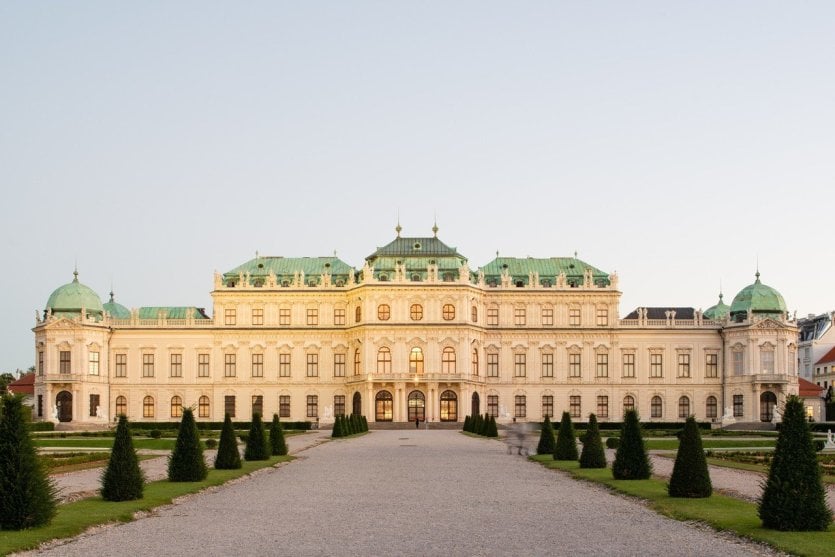
The Belvedere Palace is one of the most beautiful baroque buildings in the world. It is a must-see during a stay in Vienna. Composed of two distinct palaces, the Lower Belvedere and the Upper Belvedere, one discovers between the two a splendid French garden which dominates the Austrian capital. In addition to being a remarkable building with a rich history, the Belvedere Palace is also a famous museum housing collections of works dating from the Middle Ages to the present day. Permanent collections, temporary exhibitions, a walk in one of the most elegant green spaces in Vienna, here are 10 good reasons to visit this extraordinary building, one of the oldest museums in the world.
1- Discovering its history and architecture
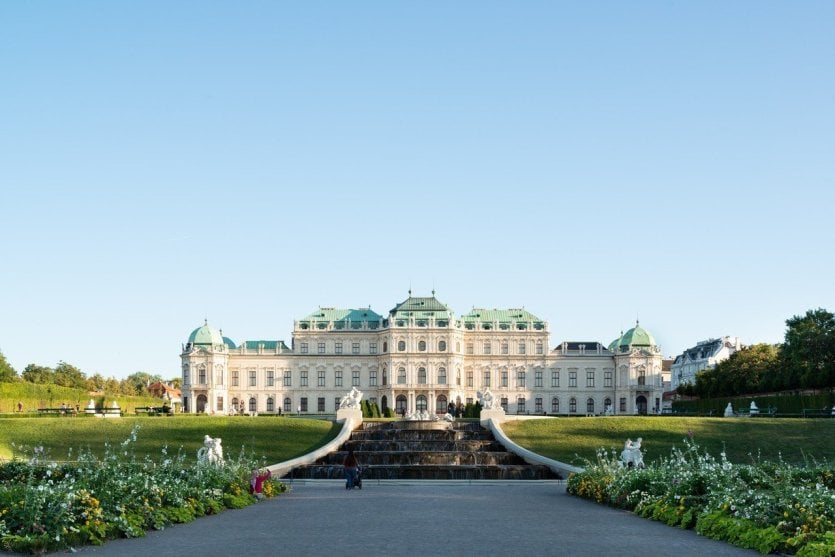
Built by Johann Lukas von Hildebrandt in 1712, the Belvedere Palace is one of the most beautiful architectural ensembles in Vienna. A visit to the monument is an opportunity to immerse yourself in its history. It was first the summer residence of Prince Eugene of Savoy, then was bought by the Habsburgs after his death. The Belvedere Palace then housed the Empire's painting collections until the construction of the Museum of Fine Arts on the Ring. The gardens were then open to the public. From 1896 onwards, it was inhabited by Archduke Franz Ferdinand, before becoming a museum in 1903. If the monument was altered by the Second World War, it was restored to its full splendor. From an architectural point of view, the Belvedere Palace is considered one of the most beautiful baroque buildings in the world. A multitude of details can be observed on its elegant façade. Arranged in two floors, the Lower Belvedere and the Upper Belvedere, the place also has an orangery and a stable that is a must-see. Inside, the walls and ceilings are equally sumptuous and rich in detail
2- See Austria's most extensive collection from the Middle Ages to the present day
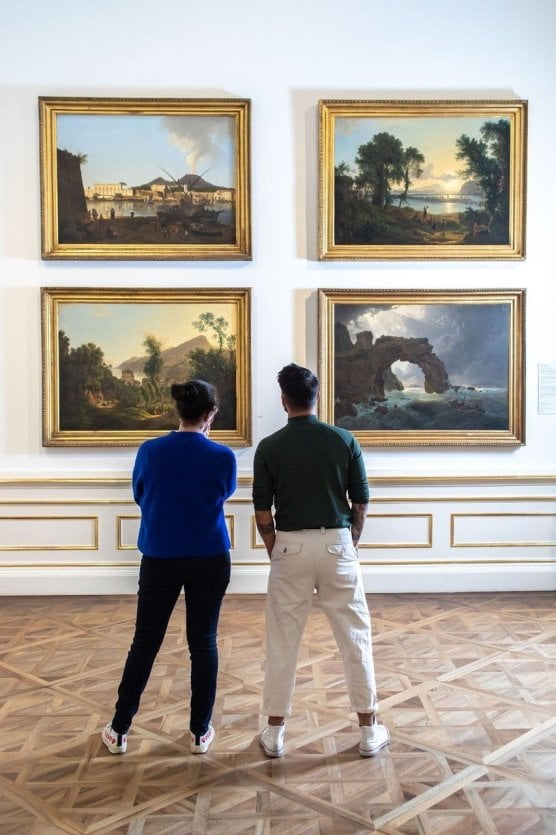
The Upper Belvedere houses the most extensive collection of Austrian art dating from medieval times to the present day. On the first floor, the Sala Terrana where the entrance is located is sublime, with its statues that seem to carry the ceiling on their shoulders. It is also on the first floor that we discover the superb collection of medieval art. The second floor reveals a superb series of baroque art with paintings of Danubian landscapes, a selection of baroque art from the 19th century and the series of grimacing busts by Franz Xaver Messerschmidt. Also on this floor are works from the Viennese Secession period, the world's largest collection of Gustav Klimt, and the Marble Room with its magnificent ceiling featuring a fresco by Carlo Innocenzo Carlone in honor of Prince Eugene. The permanent collection on the upper level is completed with works by masters such as Renoir, Monet, Van Gogh... The second floor is dedicated to the art of the inter-war period and the post-war period.
3- Admire Klimt's Kiss: a must!
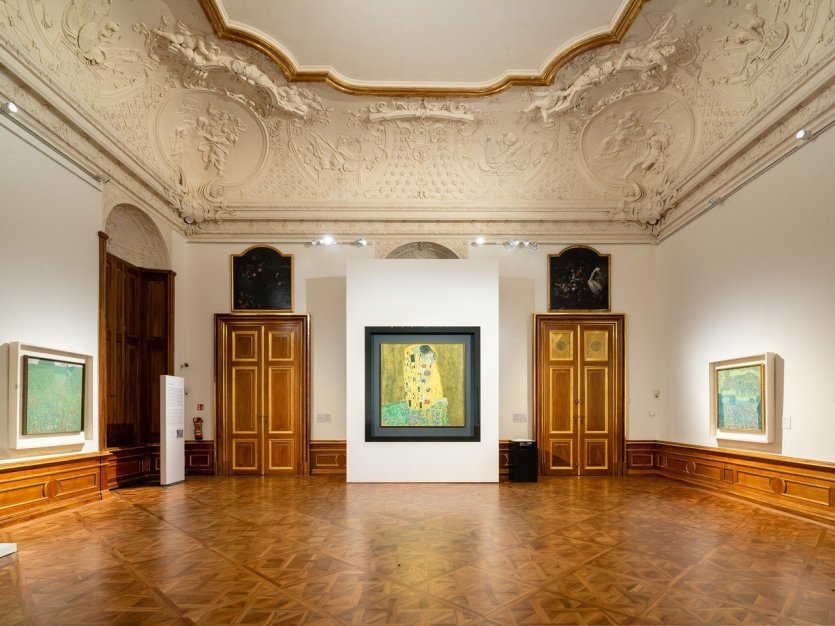
As mentioned, the Upper Belvedere houses the largest collection of works by Austrian artist Gustav Klimt. Among them are Judith and The Kiss. The latter oil on canvas, created between 1908 and 1909, is covered in gold leaf and most likely depicts Gustav Klimt giving a kiss to his companion Emilie Flöge. The Kiss, which is part of the Viennese Secession painter's golden cycle, is one of the most beautiful and emblematic representations of the kiss in the history of art. To be able to contemplate this major work of the artist in one of the most beautiful baroque palaces in the world is an unforgettable moment
4- Other masterpieces by Klimt, Monet, Van Gogh and Max Beckmann
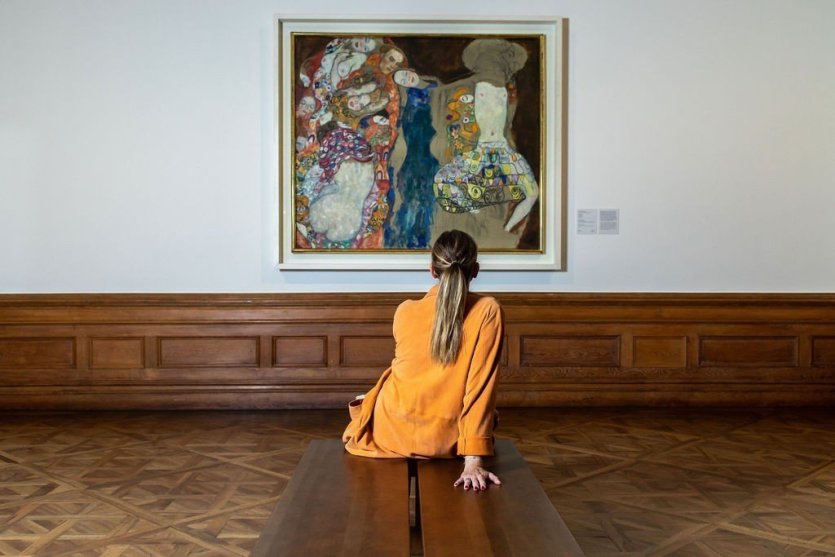
The Kiss and Judith are two of Gustav Klimt's most important works in the permanent collection of the Belvedere Palace. But you should not miss the other works of the artist, including portraits of women just as impressive. We also enjoy discovering the paintings of famous French impressionist painters, including Auguste Renoir and Claude Monet. Not forgetting Van Gogh and The Plain of Antwerp or Elena Luksch-Makowsky andAdolescentia. The Belvedere Palace is a place of choice for artistic travel through the ages and across the borders of Austria.
5- Discover the 2022 temporary exhibition program of the Lower Belvedere
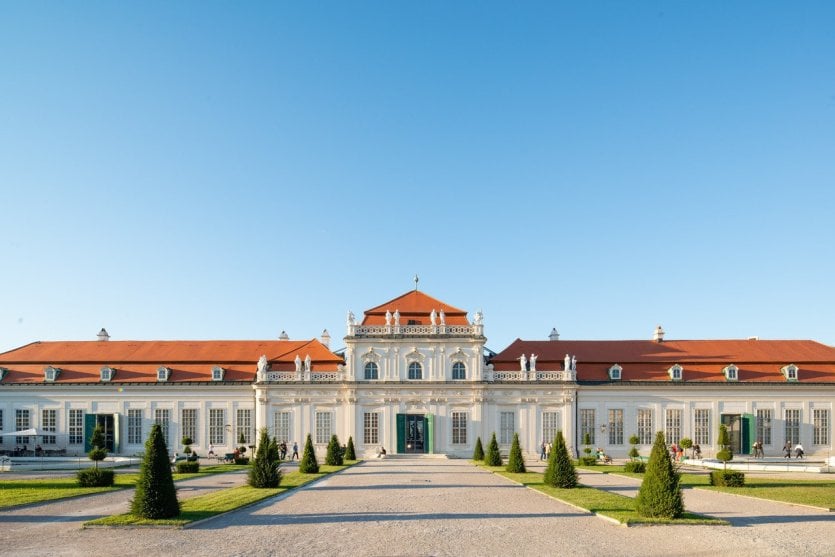
The Lower Belvedere, part of the unique architectural ensemble of the Belvedere Palace, offers visitors temporary exhibitions that complement the discovery of the permanent collections. So be sure to check out the program when planning a trip to Vienna in 2022. After a period of renovation, the Lower Belvedere celebrated its reopening with the exhibition " Dalí - Freud, an obsession ", which runs until 29 May 2022. An opportunity to discover how Freud's work inspired the great Catalan surrealist painter. Until September 4, 2022, the exhibition " Viva Venezia " immerses the public in the works of Austrian and Italian artists who have captured episodes of the millennial history of Venice, before addressing the question of the historical link between the Veneto city and Austria. Also not to be missed, starting in 2023, is the exhibition " The Belvedere 300 Years a Place of Art " (December 2, 2022 - June 7, 2024), which looks back at the different roles occupied by the building through the ages and the essential place given to art. Finally, there is the exhibition " Klimt. Inspired by Van Gogh, Rodin, Matisse..." (February 3, 2023 - May 29, 2023), during which a juxtaposition of works will allow visitors to discover the great names that inspired Gustav Klimt.
6- Stroll in the gardens
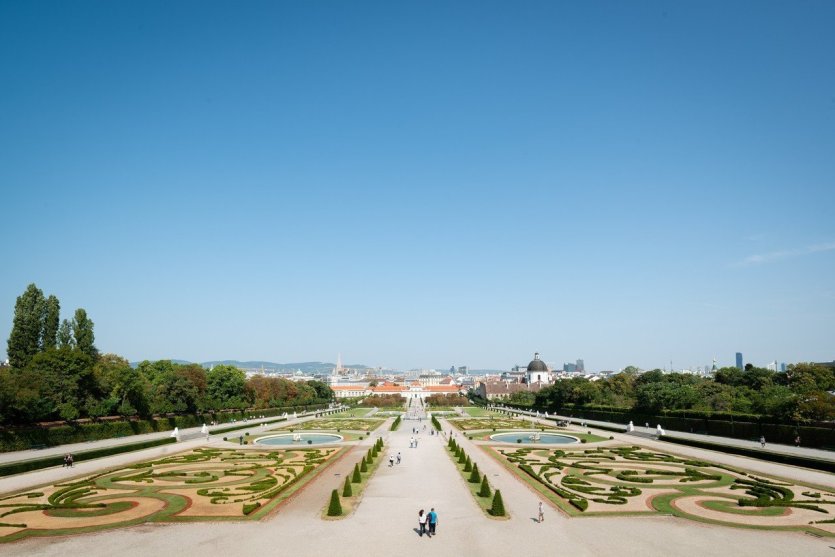
If the discovery of the Belvedere Palace is a great moment of art and architecture, the visit also includes a stroll in its splendid French gardens designed by Dominique Girard, a student of Le Nôtre who also worked on the creation of the gardens of the Palace of Versailles. This magnificent space, made up of three terraces linking the Upper and Lower Belvederes, is composed of water features and large boulevards, some of which offer a breathtaking view of Vienna. There are ponds, fountains, statues and a lot of plants. It is one of the most beautiful baroque gardens in Europe, a place to stroll and meditate.
7- Enjoy the spaces dedicated to relaxation
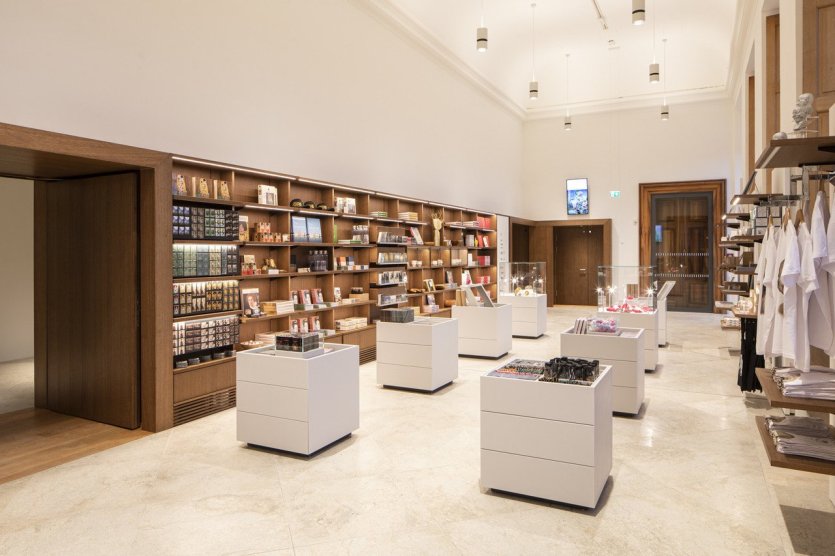
After visiting the Belvedere Palace and its art collections and before strolling through the gardens, why not stop in the store to take home a souvenir or in one of the cafés for a gourmet break? In the Upper Belvedere, the Schlosscafé welcomes visitors in an elegant setting and offers traditional Austrian cuisine, pastries as well as Viennese teas and coffees. The recently opened Park Café in the Lower Belvedere is another place to enjoy a drink and a well-deserved break.
8- An institution that will celebrate its 300th anniversary in 2023!
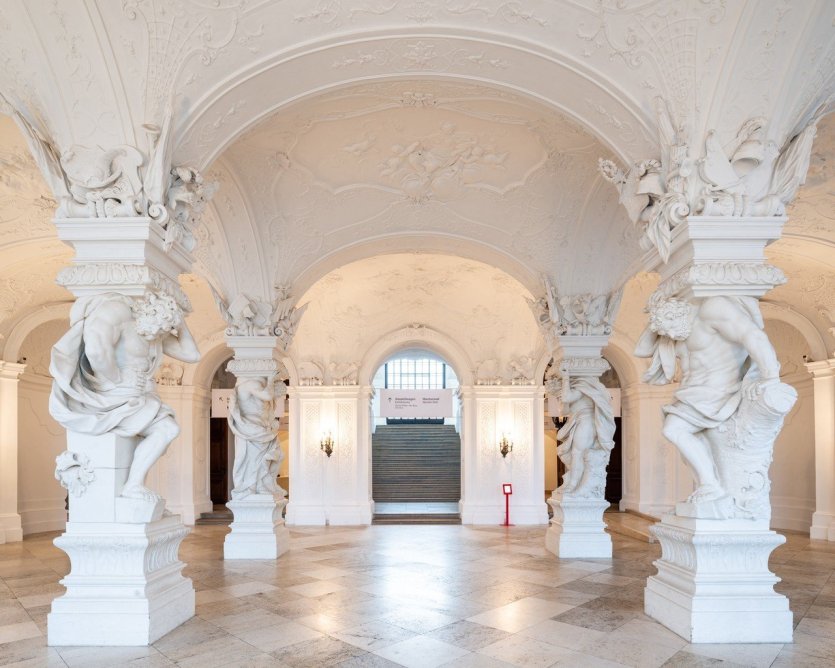
It took a decade for the construction of the summer residence of Prince Eugene of Savoy to be completed in 1723. In the course of its singular history, the building has held the status of a royal residence and hosted the festivities of the Austrian court. It was also the place where the Austrian State Treaty was signed in 1955 and remains today one of the most beautiful museums in the world. For the celebration of its 300th anniversary, the Belvedere Palace in Vienna is planning an exceptional exhibition that will trace the evolution of the role of this emblematic and inescapable building through the ages. To be watched very closely
9- Proximity to the city center and easy access
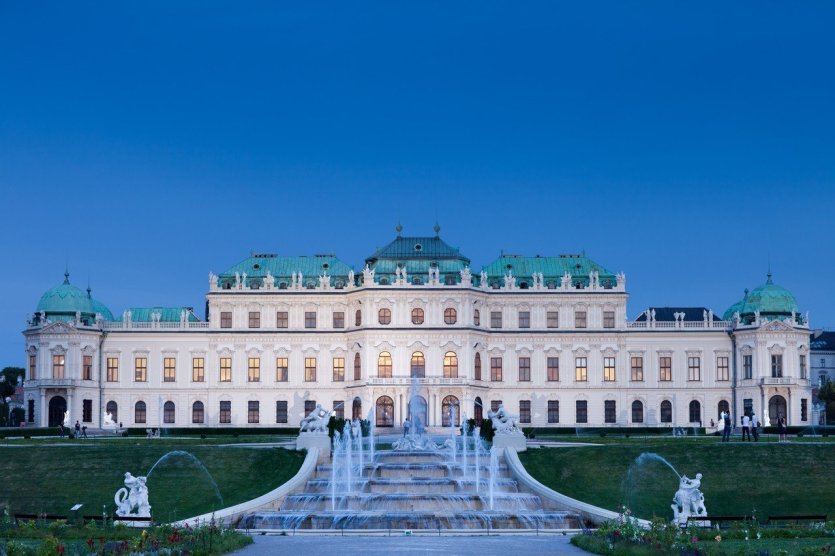
It is very easy to visit the Belvedere Palace during a stay in Vienna since it is very close to the city center. You can therefore take public transportation to get there. The U1 subway to the Südtiroler Platz-Hauptbahnhof station and a 10-12 minute walk over 1 km will take you to the upper Belvedere. Alternatively, you can take the streetcars D, O and 18 or the bus 13A. Finally, the main train station of Vienna is only 750 m away from the Upper Belvedere, a 8-10 minute walk. The streetcar 71 to Rennweg or the streetcar D to Schwarzenbergplatz are also easy to reach from the Lower Belvedere. For walkers, this part of the Belvedere can be reached within a 20-minute walk from St. Stephen's Cathedral
10- No waiting in line with the new online reservation system
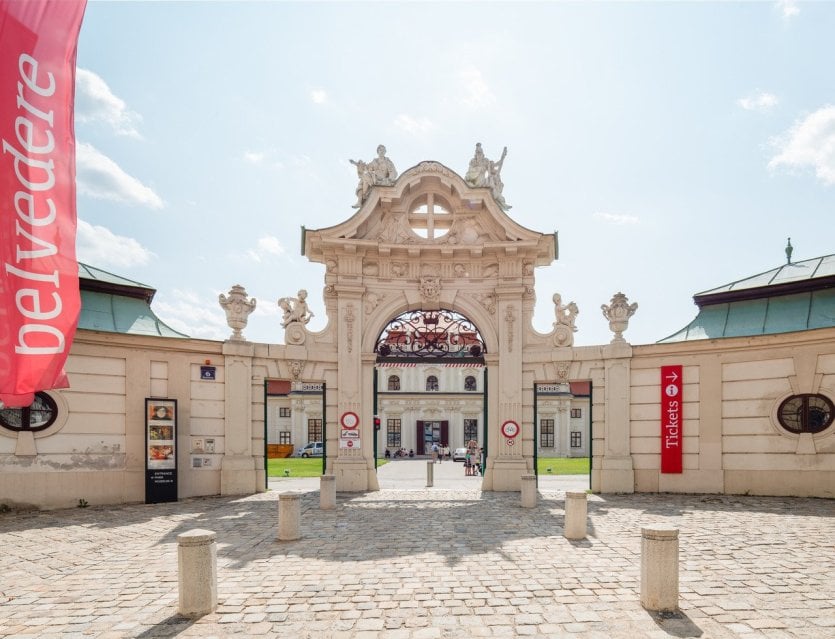
No need to wait in line for hours to buy a ticket to visit the Belvedere Palace. It is now possible to book online by visiting the building's website. The process is simple and intuitive, from selecting the places to visit to paying with a credit card. This is a real time saver. The Belvedere Palace is open every day. Even with the purchase of a ticket online, it is advisable to arrive a little before the opening time in order to access the monument as soon as possible, especially if the visit takes place during the summer


